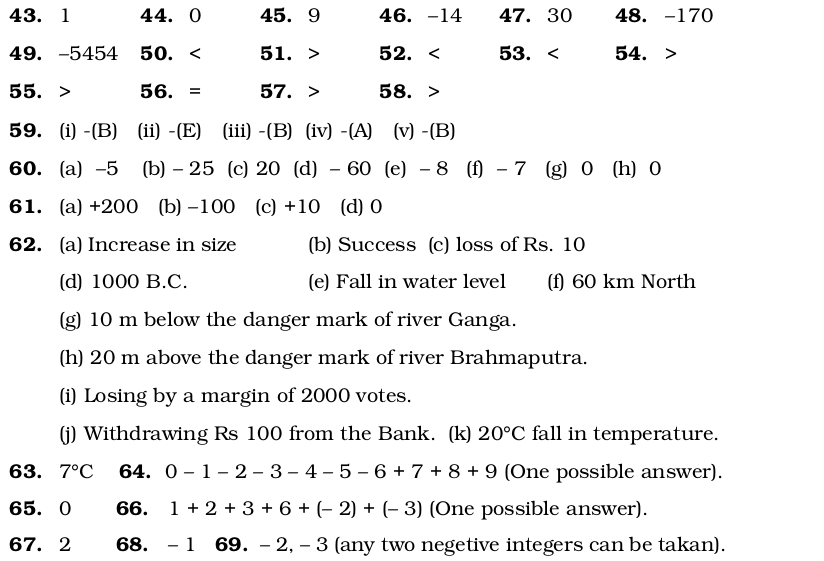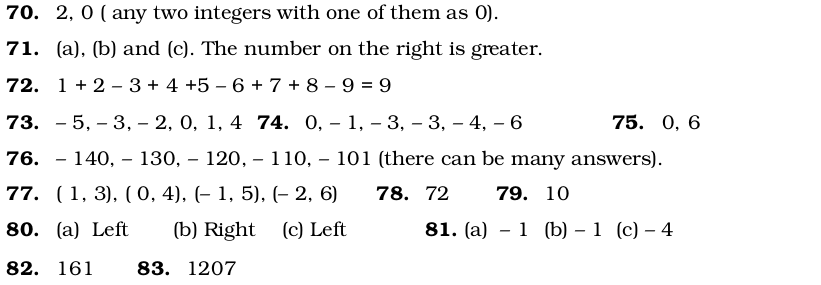NCERT Exemplar Class 6 Maths Chapter 3: Integers. NCERT Exemplar Solutions for Class 6 Maths Chapter 3 Integers prepare students for their Class 6 exams thoroughly.
Maths problems and solutions for the Class 6 pdf are provided here which are similar to the questions being asked in the previous year’s board.
Contents
NCERT Exemplar Class 6 Maths Chapter 3: Integers
Class 6: Maths Chapter 3 solutions. Complete Class 6 Maths Chapter 3 Notes.
Main Concepts and Results
- The collection of numbers 0, +1, –1, +2, –2, +3, –3, …… is called integers.
- The numbers +1, +2, +3, +4, ….. are referred to as positive integers.
- The numbers –1, –2, –3, –4, ……. are referred to as negative integers.
- The numbers 0, +1, +2, +3, …… are called non-negative integers.
- The integers are represented on the number line as follows :

- All the positive integers lie to the right of 0 and the negative integers to the left of 0 on the number line.
- All non negative integers are the same as whole numbers and hence the opertations on them are done as in the case of whole numbers.
- To add two negative integers, we add the corresponding positive integers and retain the negative sign with the sum.
- To add a positive integer and a negative integer, we ignore the signs and subtract integer with smaller numerical value from the integer with larger numerical value and take the sign of the larger one.
- Two integers whose sum is zero are called additive inverses of each other. They are also called the negatives of each other.
- Additive inverse of an integer is obtained by changing the sign of the integer. For example, the additive inverse of +5 is –5 and the additive inverse of –3 is +3.
- To subtract an integer from a given integer, we add the additive inverse of the integer to the given integer.
- To compare two integers on the number line, we locate their positions on the number line and the integer lying to the right of the other is always greater.
Solved Examples
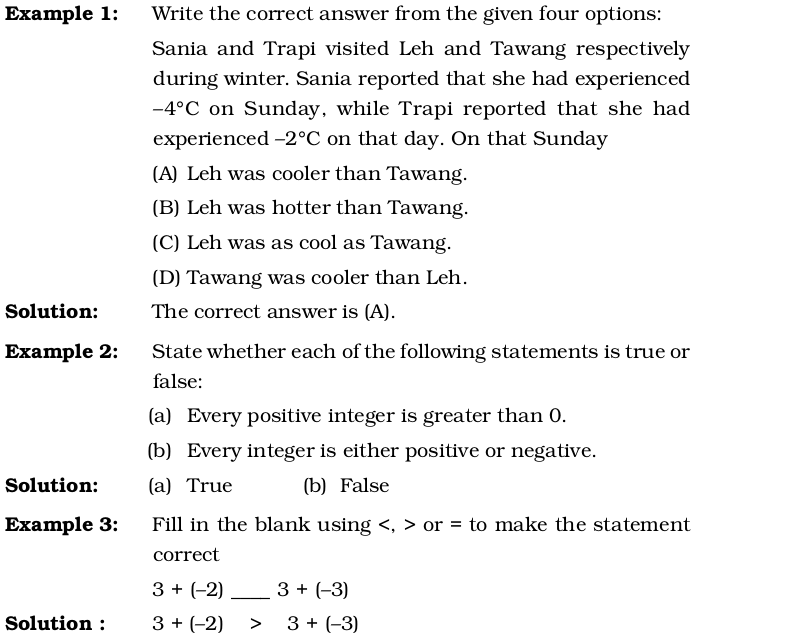


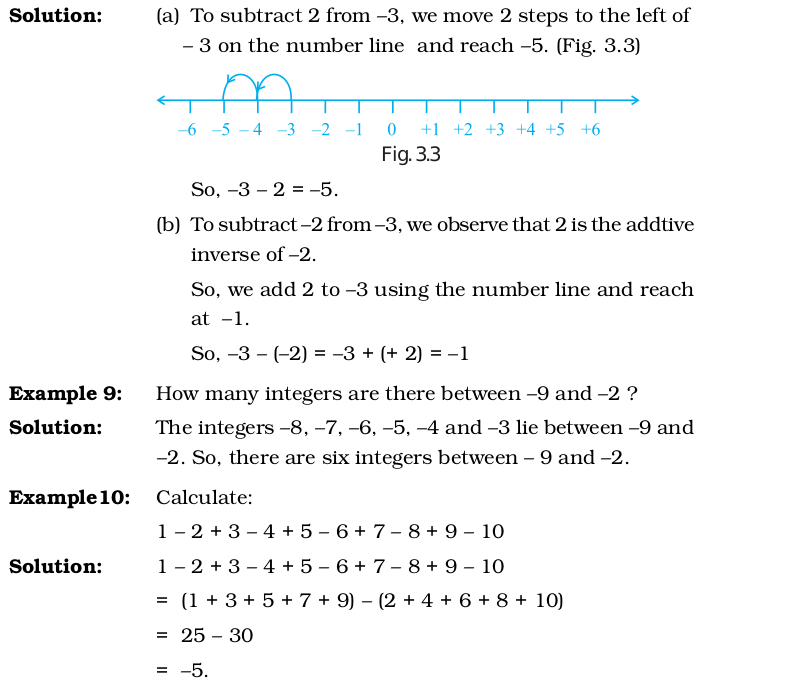
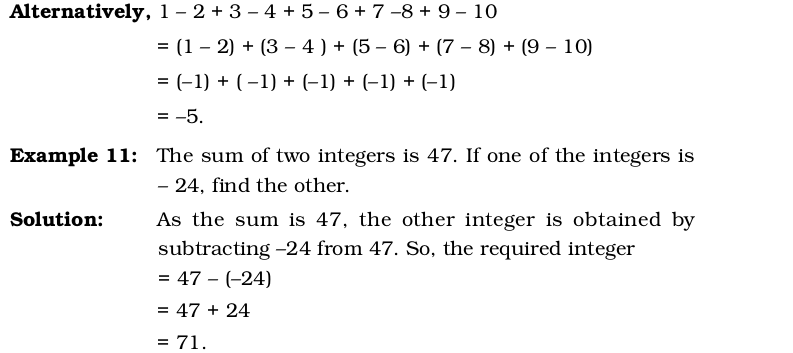

Multiple Choice Questions

True False Type Questions
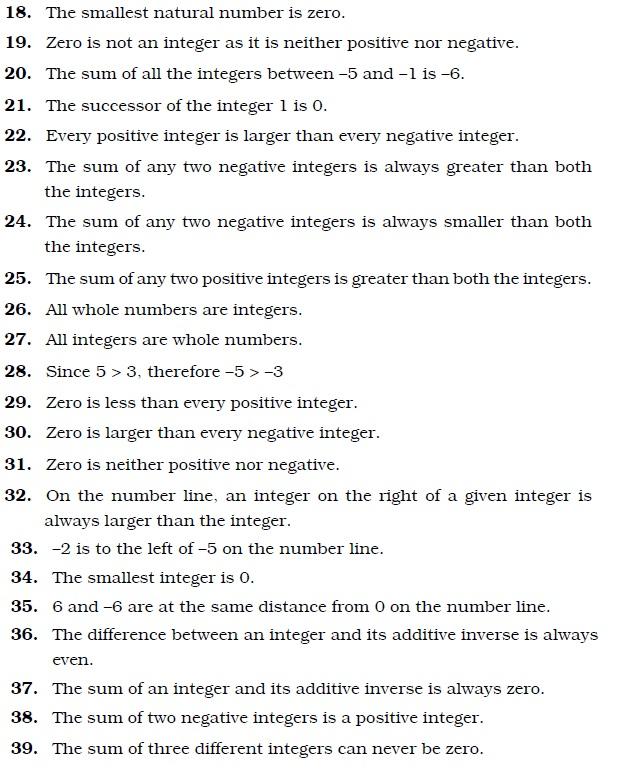
Fill in the Blanks Type Questions
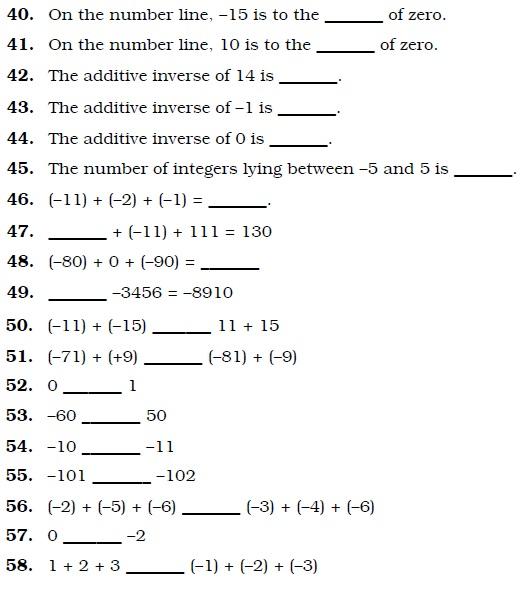
Other Important Type Questions

Activities
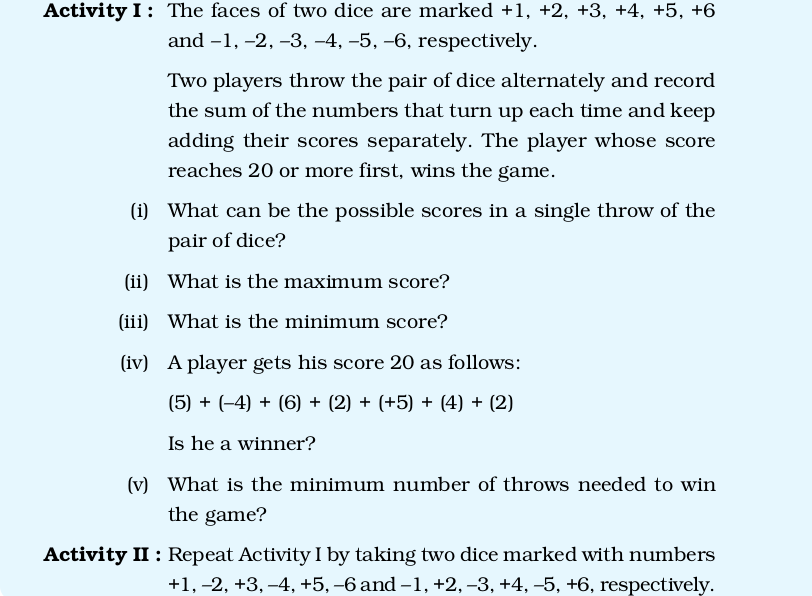
Do You Know
- Indians were the first to use negative numbers. Brahmagupta used negative numbers in 628 A.D. He stated rules for operations on negative numbers. European Mathematicians of 16th and 17th century did not accept the idea of negative numbers and referred them as absurd and fiction. John Wallis believed that negative numbers were greater than infinity.
- The scientists believe that the lowest temperature attainable is about –273°C. At this temperature, the molecules and the atoms of a substance have the least possible energy.
Answers

